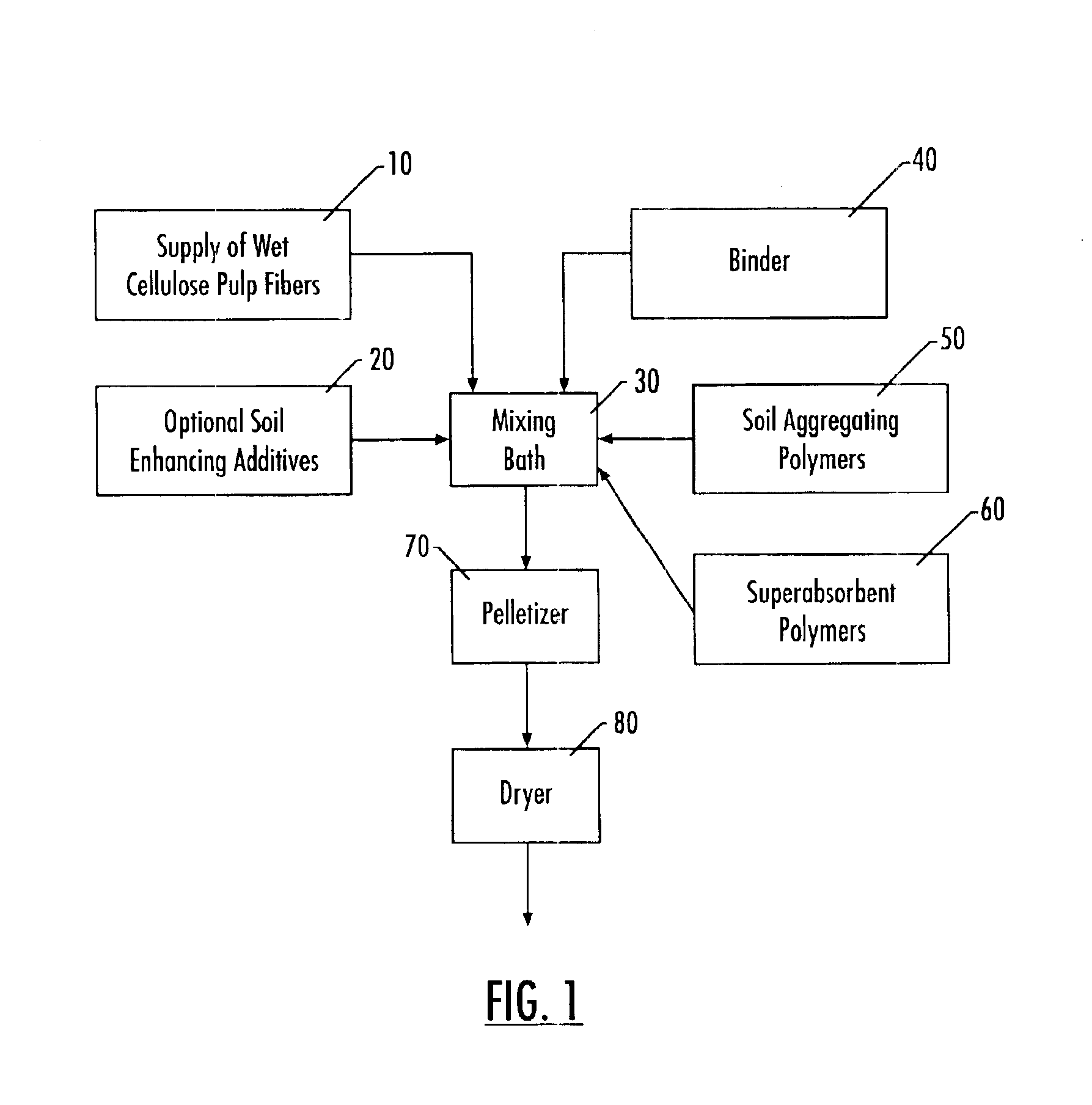Lignocellulose fiber composite with soil conditioners
- Summary
- Abstract
- Description
- Claims
- Application Information
AI Technical Summary
Benefits of technology
Problems solved by technology
Method used
Image
Examples
example 1
Illustration of Methodology to Prepare Fiber Pellets Containing Anionic PAM, Sample 1
Unbleached RAYFLOC®-J softwood kraft fibers in wet fibrous form (water content between 50 and 60%, based on weight of the wet fibers) are mixed in a Hobart mixer with sodium carboxymethyl cellulose (“CMC”) fiber, commercially available as Na-CMC-7H4F from Hercules Aqualon Division, and 5% by dry fiber weight of Cytec™ Superfloc® A-110 anionic PAM polymer. The weight ratio of dry fiber to CMC is 100 to 0.5. After blending in a Hobart mixer, the cellulose fiber / CMC / polymer mixture is fed to a Kahl pelletizing mill to form cylindrical pellets. The Kahl Pellet Mill employed is a Type L175 mill, commercially available from Amandus Kahl Nachf., Hamburg, Germany. The pellet mill, operates at discharge rates ranging between 0.1 to 0.3 kg / min, and is utilized to produce fiber pellets with moisture contents of about 50 to 60%. The fiber pellets were subsequently dried overnight at 190° F. The process can be d...
example 2
Illustration of Methodology to Prepare Fiber Pellets Containing Anionic PAM and Superabsorbent, Sample 2
A second set of fiber pellets is prepared by combining unbleached RAYFLOC®-J fibers with 0.5% carboxymethyl cellulose binder, 5 wt % Cytec™ Superfloc® A-110 polymer and 5 wt % Cytec™ Aquastore® Absorbent Polymer (all weights based on the weight of the cellulose fiber) using the mixing and pelletizing equipment and conditions described for Sample 1. Again, the process can be adjusted to obtain pellets of the appropriate dimensions, density and moisture contents prior to and after drying at 190° F.
example 3
Illustration of Methodology to Prepare Fiber Pellets Containing Anionic PAM, Superabsorbent, and Gypsum
A third set of fiber pellets is prepared by combining unbleached RAYFLOC®-J fibers with 0.5% carboxymethyl cellulose binder, 5 wt % Cytec™ Superfloc A836 polymer and 5 wt % Cytec™ Aquastore Absorbent Polymer, and 5% gypsum (all weights based on the weight of cellulose fiber) using the mixing and pelletizing equipment and conditions outlined for Samples 1 & 2. Again, the process can be adjusted to obtain pellets of the appropriate dimensions, density, and moisture contents prior to and after drying at 190° F.
PUM
 Login to View More
Login to View More Abstract
Description
Claims
Application Information
 Login to View More
Login to View More - R&D
- Intellectual Property
- Life Sciences
- Materials
- Tech Scout
- Unparalleled Data Quality
- Higher Quality Content
- 60% Fewer Hallucinations
Browse by: Latest US Patents, China's latest patents, Technical Efficacy Thesaurus, Application Domain, Technology Topic, Popular Technical Reports.
© 2025 PatSnap. All rights reserved.Legal|Privacy policy|Modern Slavery Act Transparency Statement|Sitemap|About US| Contact US: help@patsnap.com

